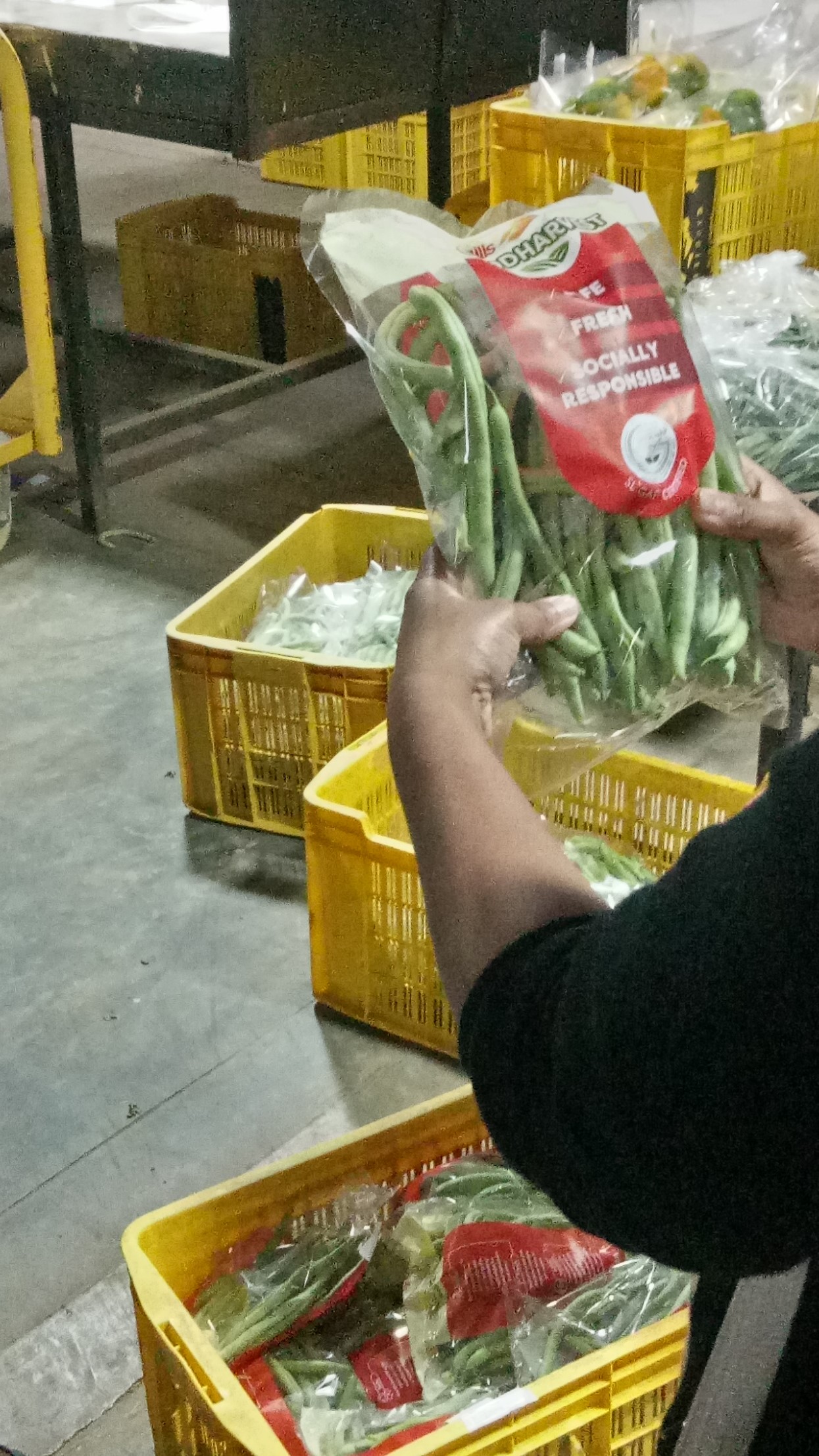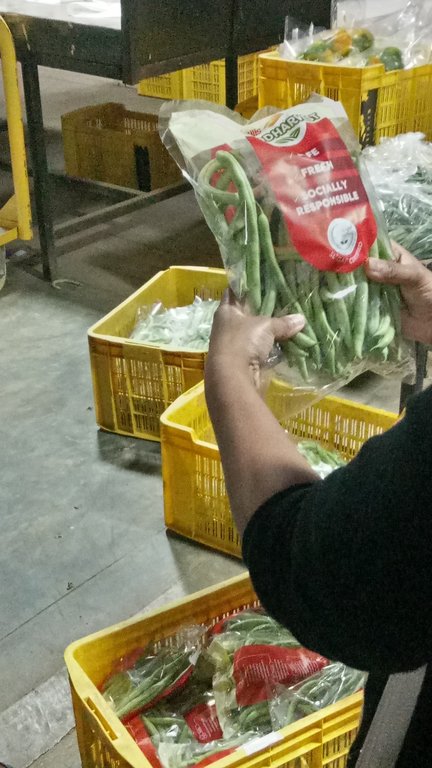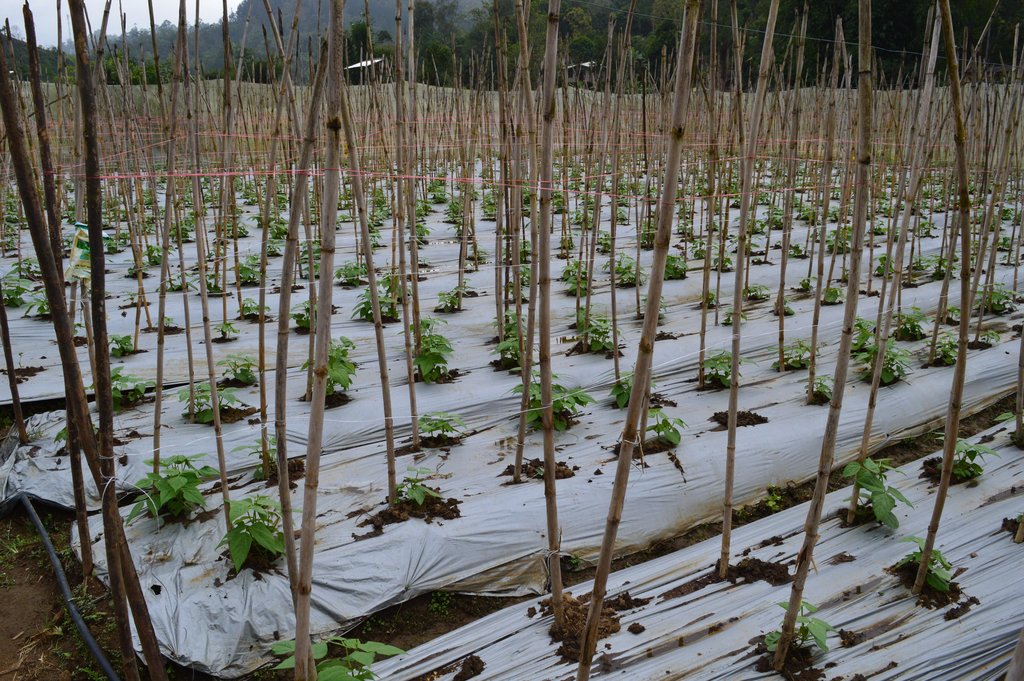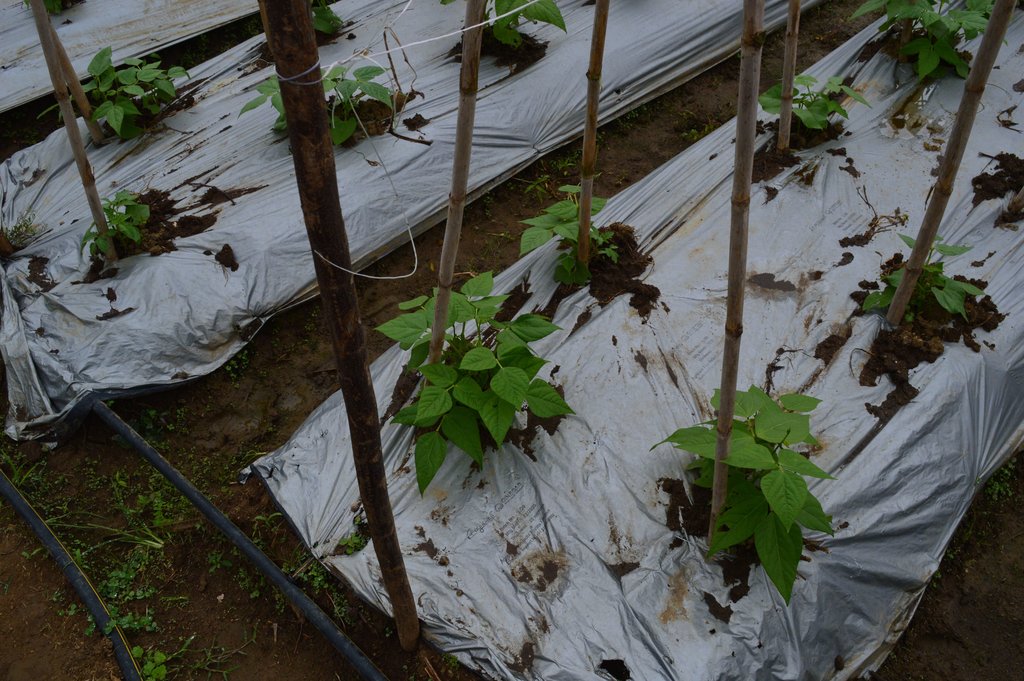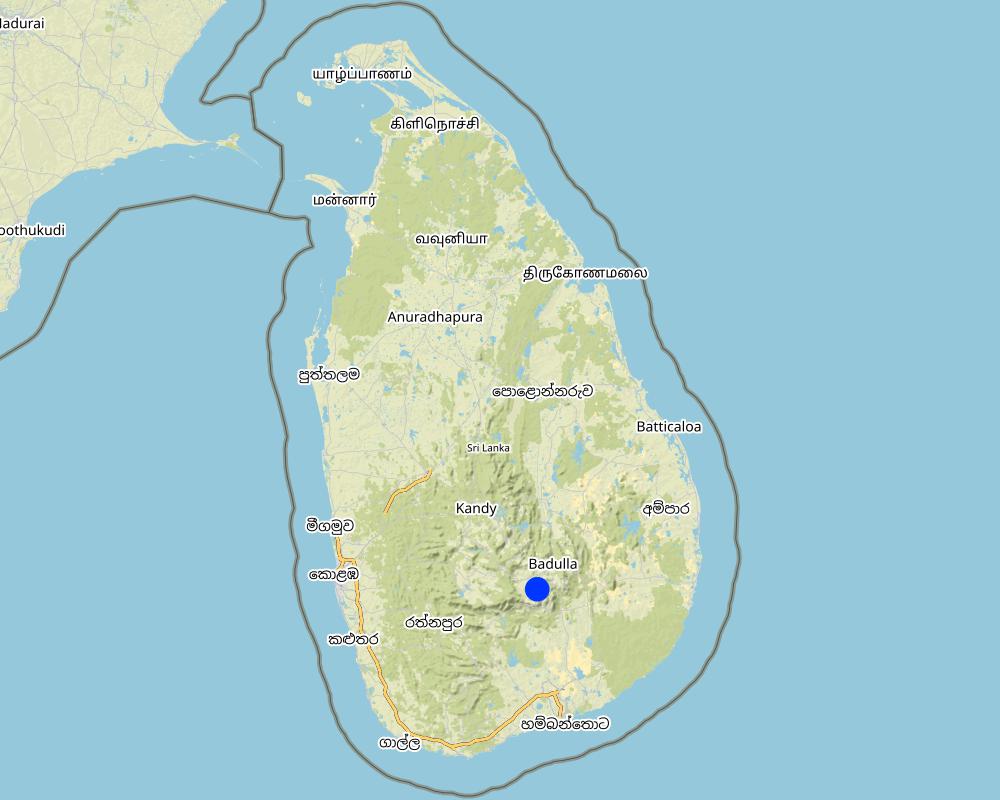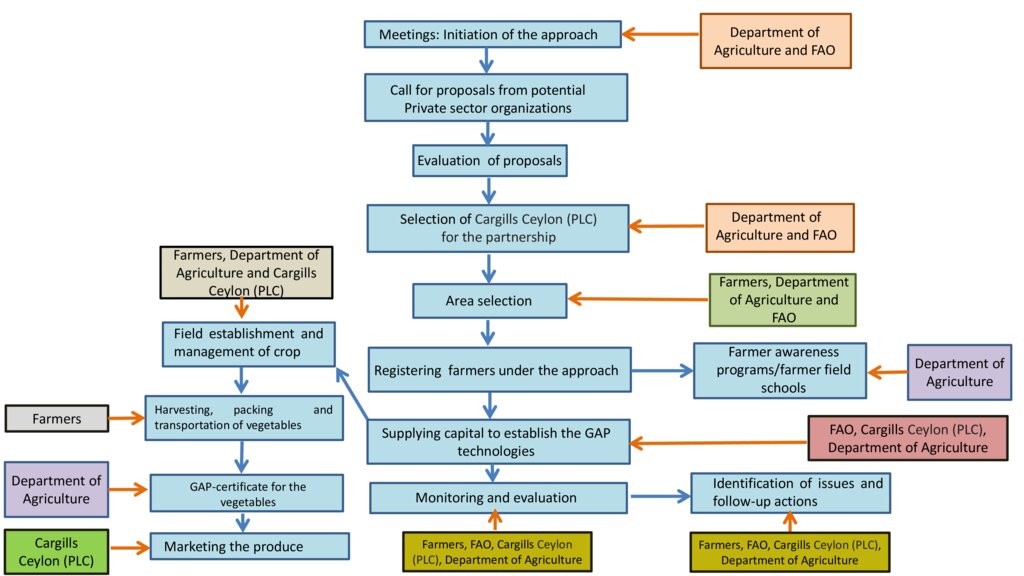Private-public partnership to promote Sustainable Land Management and Good Agricultural Practices among vegetable growers [Sri Lanka]
- Criação:
- Atualização:
- Compilador/a: Head Soil Science
- Editor: –
- Revisor: William Critchley
GAP Program
approaches_6229 - Sri Lanka
- Resumo completo em PDF
- Resumo completo em PDF para impressão
- Resumo completo no navegador
- Resumo completo (sem formatação)
- Private-public partnership to promote Sustainable Land Management and Good Agricultural Practices among vegetable growers: 2 de Maio de 2022 (inactive)
- Private-public partnership to promote Sustainable Land Management and Good Agricultural Practices among vegetable growers: 21 de Agosto de 2024 (public)
Veja as seções
Expandir tudo Recolher tudo1. Informação geral
1.2 Detalhes do contato das pessoas capacitadas e instituições envolvidas na avaliação e documentação da abordagem
Pessoa(s) capacitada(s)
usuário de terra:
Leelarathna Herath Mudiyanselage
+94 713586312
Ketakela, Ambegoda, Bandarawela
Sri Lanka
Especialista em GST:
Karunathilaka D.L. Manoj
+9477 3992261
manoj.ka@cargillsceylon.com
Cargills (Ceylon) PLC
40, York Street, Colombo
Sri Lanka
Especialista em GST:
Jayaweera Tharindu
+94713586312
tmjanusha@gmail.com
Department of Agriculture, Sri Lanka
Agrarian Service Centre, Bandarawela
Sri Lanka
Especialista em GST:
Gunasena Nimal
+94714490338
Nimal.Gunasena@fao.org
Food and Agriculture Organization of United Nations
202, Bauddhaloka Mawatha, Colombo 00700
Sri Lanka
usuário de terra:
Bandara K.M.S.J Jayasiri
+94741066961
No. 178, Ketakela, Ambegoda, Bandarawela
Sri Lanka
co-compilador/a:
Attanayake Chammi
(+)94 71 147 2288
chammiatt@agri.pdn.ac.lk / chammiattanayake@gmail.com
Department of Soil Science, Faculty of Agriculture, University of Peradeniya
Peradeniya, Sri Lanka
Sri Lanka
co-compilador/a:
Nome do projeto que facilitou a documentação/avaliação da Abordagem (se relevante)
Rehabilitation of Degraded Agricultural Lands in Kandy, Badulla and Nuwara Eliya Districts in the Central Highlands of Sri LankaNome da(s) instituição(ões) que facilitou(ram) a documentação/avaliação da Abordagem (se relevante)
Food and Agriculture Organization of the United Nations (FAO) - ItáliaNome da(s) instituição(ões) que facilitou(ram) a documentação/avaliação da Abordagem (se relevante)
Faculty of Agriculture, University of Peradeniya, Sri Lanka (AGRI.PDN) - Sri LankaNome da(s) instituição(ões) que facilitou(ram) a documentação/avaliação da Abordagem (se relevante)
Department of Agriculture, Sri Lanka (DOA) - Sri LankaNome da(s) instituição(ões) que facilitou(ram) a documentação/avaliação da Abordagem (se relevante)
Cargills (Ceylon) PLC (Cargills) - Sri Lanka1.3 Condições em relação ao uso da informação documentada através de WOCAT
Quando os dados foram compilados (no campo)?
24/02/2022
O/a compilador/a e a(s) pessoa(s) capacitada(s) aceitam as condições relativas ao uso de dados documentados através da WOCAT:
Sim
2. Descrição da abordagem de GST
2.1 Descrição curta da abordagem
A private-public partnership overcomes constraints that vegetable farmers encounter when adopting novel SLM technologies and Good Agricultural Practices. The private sector helps with marketing, value addition, certification, and financial support. The public sector fulfils farmer training needs through (for example) Farmer Field Schools using digital platforms.
2.2 Descrição detalhada da abordagem
Descrição detalhada da abordagem:
This approach was implemented in vegetable growing lands in hilly and rolling terrain, where the average annual rainfall is relatively high: Wet zone (>2500 mm) Intermediate zone (1750-2500 mm-short dry periods). Controlling soil erosion is crucial in these regions. Further, overuse and misuse of agrochemicals are common among the farmers. On the other hand, farmers experience lack of market opportunities, lack of technical and financial support and water scarcity in the intermediate zone which restricts farming to 1 or 2 cropping cycles. This approach aims to support vegetable growers by providing financial and technical support to implement technologies to minimize soil erosion and increase fertilizer and water use efficiencies, while providing adequate market opportunities and product value addition.
In the field, the following technologies were implemented as a package: plastic mulch, terracing, drip irrigation systems, fertigation units and insect proof nets. Furthermore, capacity development programs were implemented along with continuous monitoring, financial support was provided to adopt the technologies. The market opportunity was expanded via value addition through “GAP-certification" (GAP = Good Agricultural Practices) and facilitating easy and secured access to market via private sector involvement.
By adopting this technological package farmers were able to reduce the fertilizer use by about 70-80 % via "fertigation" - that is fertilizer mixed in irrigation water. Further, the pest attacks and need of insecticides were significantly reduced due to insect proof nets. The weed growth was negligible due to the plastic mulch which reduced the labour cost significantly as previously, farmers used to control weeds manually. Soil erosion was minimal due to plastic mulch used over the contour terraces. The water use efficiency was improved via drip irrigation and the farming was not affected by the short drought periods. The overall cost reduction that the farmers experience by adopting this technological package was about 20%. Further, the yield increase was about 20%, which raised the profit by 30%. Proper use of pesticides with adequate safety measures and safe disposal of the pesticide containers are mandatory to be qualified for GAP-certification. Farmers that adopt this approach collect pesticide containers in a designated place in the farm.
The implementation of the approach was as follows:
1.Discussions between Food and Agriculture Organization of United Nations (FAO) and Department of Agriculture, Sri Lanka (DOA) to develop a private-public partnership (PPP).
2.Call for proposals from private sector supermarket owners and exporters.
3.The proposal of Cargills (Ceylon) PLC was accepted.
4.Areas with easy access to Cargill’s vegetable collection centers were selected for the pilot programme, namely Haguranketha and Nuwarleiya, Boralanda and Bandarawela.
5.Eighty progressive farmers who had been providing vegetables for the already established vegetable collection centers were selected for the initial program.
6.Farmer awareness programs and Farmer Field Schools were conducted on the technological package, the GAP certification process and market arrangements.
7.The technical package was installed in farmers’ fields. Farmers were supported financially to obtain raw materials and cover the capital cost (for polythene, drip irrigation systems, insect-proof nets and accessories, fertilizers and pesticides). The cost estimated to implement the package was Rs. 300,000 for quarter of an acre (Rs. 2.96 million/ha = approx. UD$ 8950/ha). Cargills and the FAO funded RDAL (Rehabilitation of degraded agricultural lands in the central highlands of Sri Lanka) shared 2/3 of the material cost. The rest of the cost was borne by the farmer. Cargills Bank provided low interest loans to farmers to cover their share of the capital cost.
8.Continuous monitoring and capacity development and motivational programs were implemented via field visits and WhatsApp groups.
9.GAP-certification was provided for the vegetables.
10.A market was provided by Cargills with a guaranteed 10% premium above the standard rate.
11.Alongside the implementation processes, other developments took place. These included: supply of fertilizers and pesticides to farmers and provision of study scholarships for children of the farmers by Cargills.
The limitations of the approach are as follows: first, reluctance of the farmers to follow the rigorous record-keeping process necessary to obtain the GAP-certification; second, the absence of a proper methodology to recycle or upcycle the pesticide containers; third, the on-going lack of consumer awareness about the GAP-certified products.
2.3 Fotos da abordagem
2.5 País/região/locais onde a abordagem foi aplicada
País:
Sri Lanka
Região/Estado/Província:
Bandarawela/Badulla District/Uva Province
Especificação adicional de localização:
Ambegoda Village
Comentários:
Ambegoda village is located about 8 km away from Bandarawela town. Other than the studied site, this approach was implemented in Jaffna, Kilinochchi, Monaragala, Thabuttegama, Galenbindunuwewa, Boralanda, Adhikaarigama and Thanamalwila areas
Map
×2.6 Datas de início e término da abordagem
Indique o ano de início:
2019
2.7 Tipo de abordagem
- Baseado em projeto/programa
2.8 Principais metas/objetivos da abordagem
This approach aims to support vegetable growers by providing financial and technical support to implement technologies to minimize soil erosion and increase fertilizer and water use efficiencies, while providing adequate market opportunities and product value addition via GAP-certification.
2.9 Condição que propiciam ou inibem a implementação de tecnologia/tecnologias aplicada(s) segundo a abordagem
Disponibilidade/acesso a recursos e serviços financeiros
- Propício
Farmers are encouraged to get financial support from the Cargills (Ceylon) PLC to implement their technological package
Quadro jurídico (posse de terra, direitos de uso da terra e da água)
- Propício
The collaboration between government and private sector helped to build the trust among farmers about the approach
Conhecimento sobre GST, acesso a suporte técnico
- Propício
The knowledge gained on SLM practices obtained through farmer field schools was important for the success of the approach
Mercados (para comprar entradas, vender produtos) e preços
- Propício
The GAP certified agricultural produce was purchased by Cargills (Ceylon) PLC for a higher price; hence many farmers were motivated to implement the technology in their fields
3. Participação e papel das partes interessadas envolvidas
3.1 Partes interessadas envolvidas na abordagem e seus papéis
- Usuários de terra/comunidades locais
Farmers
Farmers implement the technology in their fields
- Especialistas em GST/ consultor agrícola
Agricultural Instructors (AI) of DOA
AIs organize farmer field schools and training programmes for farmers. They also visit the fields to guide, monitor and provide recommendations for the farmers for successful implementation of the approach. The experts connect with the farmers through WhatsApp groups, where the farmers can quickly find solutions for the issues. Also, it facilitated the peer learning among the farmers.
- Setor privado
Cargills (Ceylon) PLC
Cargills (Ceylon) PLC is the buyer of the fresh produce from farmers who practice this approach. The collection centre manager of the Cargills (Ceylon) PLC plays a critical role. He connects with the farmers from the field establishment of the technology package to packing and transporting the final produce to the collection centers.
- Organização internacional
FAO
FAO initiated the program and is one of the main coordinating bodies of the project of Rehabilitation of degraded agricultural lands in the central highlands of Sri Lanka (RDAL).
3.2 Envolvimento do usuários de terra/comunidades locais nas diferentes fases da abordagem
| Envolvimento do usuários de terra/comunidades locais | Especifique quem estava envolvido e descreva as atividades | |
|---|---|---|
| Iniciação/motivação | Passivo | Though the progressive farmers were selected from the farmers who sell their produce to the Cargills (Ceylon) PLC collection centres at the initial phase of the project, new farmers were motivated to implement the approach when they observed the success of the neighbouring farmers. |
| Planejamento | Nenhum | The planning phase of the approach totally governed by the RDAL project team with the assistance of the private and government sector stakeholders. |
| Implementação | Apoio externo | Farmers directly involved with the implementation phase of the approach. |
| Monitoramento/avaliação | Participativo | Farmers were actively involved with the monitoring and evaluation process of the approach by discussing the problem faced by them and finding solutions with the help of AIs. Farmers collectively shared their experience and those feedback helped for the evaluation process of the approach. |
| Expansion | Apoio externo | The children of the farmers are given study scholarships by the private sector partner. |
3.3 Fluxograma (se disponível)
Descrição:
The flow chart demonstrates the approach with the intervening steps of the Public and private sectors
Autor:
Dr. Chammi Attanayake and Mr. Tharindu Kulasinghe
3.4 Decisão sobre a seleção de tecnologia/tecnologias de GST
Especifique quem decidiu sobre a seleção de tecnologia/tecnologias a serem implementadas:
- Principalmente especialistas em GST, após consulta com usuários da terra
Explique:
Selection of technologies to be implemented in the approach was done based on the discussions between the FAO representatives, DOA officials and Cargills (Ceylon) PLC. AIs of DOA have been closely working with the farmers; hence, their experience was very helpful to select the best technologies to be implemented in farmer fields.
Especifique em que base foram tomadas as decisões:
- Avaliação de conhecimento bem documentado de GST (tomada de decisão baseada em evidências)
- Experiência pessoal e opiniões (não documentado)
4. Suporte técnico, reforço das capacidades e gestão do conhecimento
4.1 Reforço das capacidades/ formação
Foi oferecida formação aos usuários da terra/outras partes interessadas?
Sim
Especifique quem foi capacitado:
- Usuários de terra
Tipo de formação:
- Em exercício
- Agricultor para agricultor
- Áreas de demonstração
Assuntos abordados:
Establishment and maintenance of GAP technology in farmer fields, irrigation management (drip irrigation), pests and disease management, fertilizer application through drip irrigation (fertigation), post-harvest technology, nursery management
Comentários:
Training programs mainly focused on establishment and maintenance of technology package according to standards and identification of pest and disease problems. Training programs are held in fields as farmer field schools. Those training programs are organized and conducted by AIs of the DOA and Agricultural Officers of Cargills (Ceylon) PLC. A training program provides information from the establishment of the technological package to harvesting of the fresh produce
4.2 Serviço de consultoria
Os usuários de terra têm acesso a um serviço de consultoria?
Sim
Especifique se foi oferecido serviço de consultoria:
- nas áreas dos usuários da terra
Descreva/comentários:
AIs of DOA and agricultural officers of Cargills (Ceylon) PLC visit farmers frequently to guide farmers and train them for better management of the technologies in the field
4.3 Fortalecimento da instituição (desenvolvimento organizacional)
As instituições foram fortalecidas ou estabelecidas através da abordagem?
- Não
4.4 Monitoramento e avaliação
Monitoramento e avaliação são partes da abordagem?
Sim
Caso afirmativo, esta documentação é destinada a ser utilizada para monitoramento e avaliação?
Sim
4.5 Pesquisa
A pesquisa foi parte da abordagem?
Não
5. Financiamento e apoio material externo
5.1 Orçamento anual para o componente de GST da abordagem
Indique o orçamento anual para o componente de GST da abordagem em US$:
165000,00
Comentários (p. ex. principais fontes de recursos/principais doadores):
FAO and Cargills (Ceylon) PLC are main sources of funding to implement the approach
5.2 Apoio financeiro/material concedido aos usuários da terra
Os usuários da terra receberam apoio financeiro/material para a implementação de tecnologia/tecnologias?
Sim
Caso afirmativo, especifique tipo(s) de apoio, condições e fornecedor(es):
At the implementation, the farmers receive materials worth of 260,000 LKR, which consists of drip irrigation system, plastic mulch and insect proof net. This covers 2/3 of the cost of implementation. The rest of the cost, mostly the labor cost, is borne by the farmer. The farmer was given the choice of receiving a low interest loan through Cargills Agro-development Company and Cargills Bank, the subsidiaries of Cargillls (Ceylon) PLC to cover their share of the capital cost.
5.3 Subsídios para entradas específicas (incluindo mão-de-obra)
- Equipamento
| Especifique quais entradas foram subsidiadas | Em que medida | Especifique os subsídios |
|---|---|---|
| Ferramentas | Totalmente financiado | Drip irrigation system (pipes, nozzles, pumps, filters, water tank) Insect proof net Plastic materials for the mulch |
Se a mão-de-obra pelos usuários da terra foi uma entrada substancial, isso foi:
- Pago em dinheiro
5.4 Crédito
Foi concedido crédito segundo a abordagem para atividades de GST?
Sim
Especifique as condições (taxa de juros, reembolso, etc):
The interest rate of the loan is 8%, repayable in 2 years with a grace period of 6 months
Especifique os fornecedores de crédito:
The loan is provided through Cargills Agro-development Company and Cargills Bank, subsidiaries of Cargillls (Ceylon) PLC
Especifique os destinatários do crédito:
Farmers
5.5 Outros incentivos ou instrumentos
Foram utilizados outros incentivos ou instrumentos para promover a implementação das tecnologias de GST?
Sim
Caso afirmativo, especifique:
If yes, specify: Cargills (Ceylon) PLC prioritize the project farmers when purchasing the produce at collection centres and also they provide packing and branding materials under Cargill’s Good Harvest Brand. A 20% extra payment, above the normal purchasing price, is made for GAP-Certified, ‘Good Harvest’ branded products, subject to a minimum and maximum amounts of Rs. 10.00 and Rs. 30.00 per kg respectively.
6. Análise de impactos e declarações finais
6.1 Impactos da abordagem
A abordagem concedeu autonomia aos usuários locais de terra, melhorou a participação das partes interessadas?
- Não
- Sim, pouco
- Sim, moderadamente
- Sim, significativamente
The stakeholder’s participation is encouraged through farmer field schools and advisory services. The collective action of farmers to solve field problems themselves is observed through such programs.
A abordagem auxiliou os usuários da terra a implementar e manter as tecnologias de GST?
- Não
- Sim, pouco
- Sim, moderadamente
- Sim, significativamente
The technology package introduced for farmers, insect proof net, drip irrigation system and plastic mulch, through the approach aims for irrigation water conservation; mitigate soil erosion and pest and disease attacks.
A abordagem melhorou a coordenação e a implementação economicamente eficiente da GST?
- Não
- Sim, pouco
- Sim, moderadamente
- Sim, significativamente
The technology package of the approach is ultimately reducing the cost for labour, irrigation, pesticides and other agrochemicals.
A abordagem mobilizou/melhorou o acesso aos recursos financeiros para implementação da GST?
- Não
- Sim, pouco
- Sim, moderadamente
- Sim, significativamente
Farmers receiving a loan to implement the approach in their fields.
A abordagem aprimorou o conhecimento e as capacidades dos usuários da terra para implementar a GST?
- Não
- Sim, pouco
- Sim, moderadamente
- Sim, significativamente
The farmers were trained on SLM practices through extension programs (farmer field schools and advisory services).
A abordagem construiu/fortaleceu instituições, colaboração entre partes interessadas?
- Não
- Sim, pouco
- Sim, moderadamente
- Sim, significativamente
Active involvement of public and private sector participation is a distinct feature of the approach
A abordagem encorajou os jovens/as próximas gerações de usuários de terra a se envolverem na GST?
- Não
- Sim, pouco
- Sim, moderadamente
- Sim, significativamente
The interest on participation of young generation in the approach is significant due to implementation of novel technologies. And also because of the deviation of the traditional vegetable cultivation practices.
A abordagem resultou em segurança alimentar aprimorada/nutrição melhorada?
- Não
- Sim, pouco
- Sim, moderadamente
- Sim, significativamente
The approach helps to improve the yield and the quality of the produce
A abordagem melhorou o acesso aos mercados?
- Não
- Sim, pouco
- Sim, moderadamente
- Sim, significativamente
The harvest of the farmers who implement the technologies, is purchased by the Cargills (Ceylon) PLC for a reasonably higher price.
A abordagem aprimorou a capacidade dos usuários da terra de adaptar-se a mudanças climáticas/extremos e atenuar os desastres relacionados com o clima?
- Não
- Sim, pouco
- Sim, moderadamente
- Sim, significativamente
Farmers require less irrigation water when cultivating under drip irrigation and plastic mulch technologies. Hence the cultivation can proceed even under a drought or water scarce conditions.
6.2 Principal motivação dos usuários da terra para implementar a GST
- Produção aumentada
Vegetable production increases due to better crop management practices, improved irrigation efficiency and reduced pests and disease damages
- Lucro (lucrabilidade) aumentado, melhora da relação custo-benefício
Cargills (Ceylon) PLC prioritizes the GAP certified farmers and buy vegetables for higher prices with contrast to other farmers. Hence, vegetable cultivation under the approach is a sort of value addition for the fresh produce. Moreover, the labour cost for field establishment of crop, irrigation, weeding and pesticide application is less and increase the profitability of cultivation
- Degradação do solo reduzida
The drip irrigation system and the plastic mulch help to increase the irrigation water use efficiency. Plastic mulch also can be considered as a soil conservation measure and it reduces weed growth.
- Riscos de desastre reduzido
Farmers can cultivate even under water scarce or drought conditions and reduces the risk of crop failure due to water scarcity
- Carga de trabalho reduzida
The labour requirement for irrigation, planting, weeding, pesticide application is less under the GAP approach
- Pagamentos/subsídios
The farmers who follow GAP are getting higher price for vegetables compared to other farmers (10% higher payment, than the normal purchasing price)
- Consciência ambiental
The approach reduces the use of pesticides and irrigation water and reduce soil erosion.
- melhoria dos conhecimentos e aptidões de GST
Farmers are getting new knowledge on technologies that utilize resources more efficiently and they are getting skills on an establishment and managing modern technology package.
6.3 Atividades de sustentabilidade de abordagem
Os usuários da terra podem manter o que foi implementado através da abordagem (sem apoio externo)?
- Sim
Caso afirmativo, descreva como:
The assurance of the market for value added products via well-established market chain of the Cargills (Ceylon) PLC is a major reason behind the sustainability of the approach.
6.4 Pontos fortes/vantagens da abordagem
| Pontos fortes/vantagens/oportunidades na visão do usuário da terra |
|---|
| Increased vegetable production compared to the conventional and traditional agricultural management practices. |
| Reduced cost for labour for establishment of the crop, irrigation, pesticide application, weeding and for other maintenance activities. |
| Financial benefit obtained by the lower requirement of fertilizers and agrochemicals |
| The number of cropping cycles was increased in regions where short drought periods exist. |
| Selling the produce for a higher price due to value addition via certification. |
| Minimizes the involvement of middlemen in selling farmer’s produce for market helps to increase the farmer’s profit and also benefits the seller, Cargills (Ceylon) PLC, ultimately the consumer. |
| Pontos fortes/vantagens/oportunidades na visão do/a compilador/a ou de outra pessoa capacitada |
|---|
| Minimum soil erosion due to use of plastic mulch and terraces. The lands are susceptible for erosion by water due to relatively high rainfall intensity and the hilly-rolling terrain. The control of soil erosion is curial to maintain sustainable land use in the region. |
| The inorganic fertilizer use was reduced by 70-80%. Use of pesticides was significantly reduced. Soil nutrient enrichment and pollution of soil and water sources were minimal. |
| Increased vegetable production helps for the food security of the country. |
| Improves the quality of the fresh produce. |
| Increased water use efficiency. |
| Uplifting the quality of life among the rural farming community. |
| Attraction of young community for farming. |
6.5 Pontos fracos, desvantagens da tecnologia e formas de superá-los
| Pontos fracos/desvantagens/riscos na visão do usuário da terra | Como eles podem ser superados? |
|---|---|
| Maintaining the technology under field conditions is difficult due to the cause of natural factors (eg: High winds break the insect proof net). | The effect of natural factors on structures of the technology can be minimized by establishing those structures suitable for specific natural conditions. Live wind breakers (Rows of trees) can be established. |
| Discard of plastic materials (insect proof net and plastic mulch) when their lifespan is over. | Implementation of waste disposal method is required and need to look for possible recycling options. |
| Pontos fracos/vantagens/riscos na visão do/a compilador/a ou de outra pessoa capacitada | Como eles podem ser superados? |
|---|---|
|
The farmers of older generation are somewhat reluctant to adopt the approach, mainly because of rigorous record keeping process |
This can be overcome by conducting advisory programs and extension services targeting specific groups of farming communities |
| Requirement of more financial support to cover the capital | Provide more subsidies and loans |
| Lack of consumer awareness about "Gap-certified products" | Advertising |
7. Referências e links
7.1 Métodos/fontes de informação
- visitas de campo, pesquisas de campo
1 field visit
- entrevistas com usuários de terras
2 interviews
- entrevistas com especialistas em GST
4 interviews
- compilação de relatórios e outra documentação existente
4 documents
7.2 Referências às publicações disponíveis
Título, autor, ano, ISBN:
Crop production under GAP certification, Seed certification service, Department of Agriculture, Sri Lanka, 2019 (in Sinhala language)
Disponível de onde? Custos?
Freely available at the Department of Agriculture, Sri Lanka Website: https://doa.gov.lk/scs-gap-certification/
Título, autor, ano, ISBN:
Good Agricultural Practices for Solanaceae family crops, Ministry of Agriculture and Department of Agriculture, Sri Lanka, 2016 (in Sinhala language)
Disponível de onde? Custos?
Freely available at the Department of Agriculture, Sri Lanka Website: https://doa.gov.lk/scs-gap-certification/
Título, autor, ano, ISBN:
Sustainable Land Management through GAP certification (Project proposal), Cargills (Ceylon) PLC, April-2019
7.3 Links para informação relevante que está disponível online
Título/ descrição:
Good agriculture practices (GAP) certification (in Healthy Soil Matters). Food and Agriculture Organisation of United Nations, Sri Lanka
URL:
https://sricat.net/images/Healthy-Soil-Matters---English-compressed.pdf
Título/ descrição:
An interview on implementation of the approach among vegetable cultivating farmers in upcountry. It gives information on involvement and roles of different sectors to popularize the approach among farmers.
URL:
https://www.youtube.com/watch?v=qChXPYnb0Wc
Título/ descrição:
Sl-GAP certification portal
URL:
http://www.slgap.doa.gov.lk/
Links e módulos
Expandir tudo Recolher tudoLinks
Não há links
Módulos
Não há módulos


